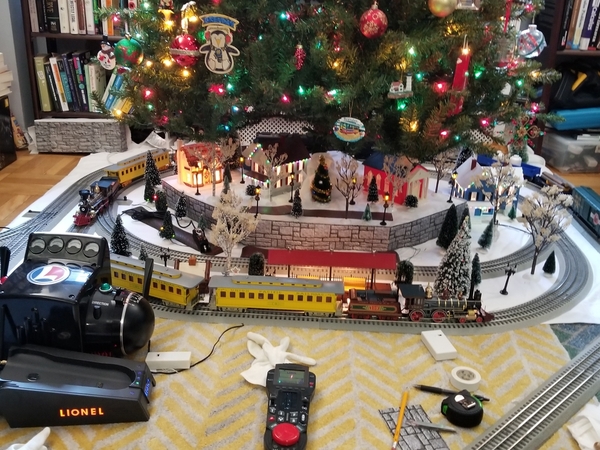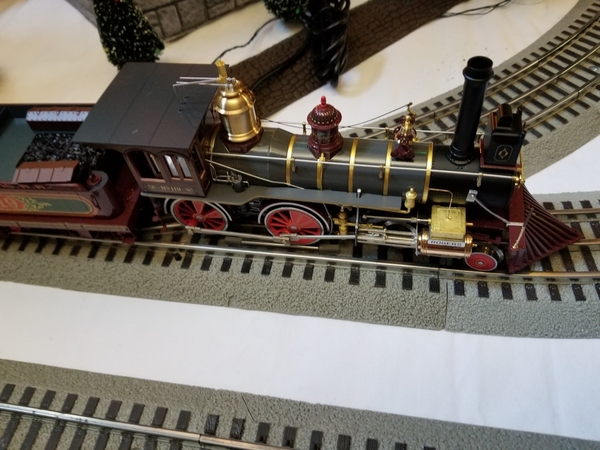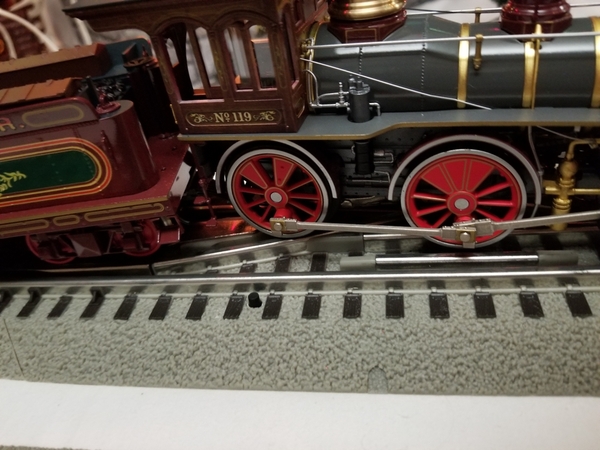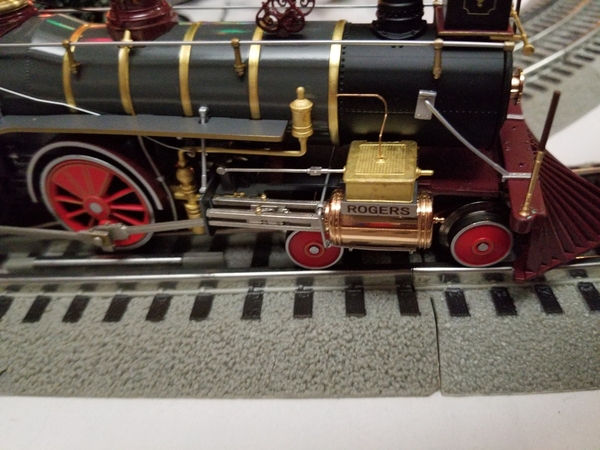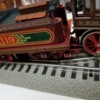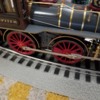I got the two new brass hybrid models of the 4-4-0s that met at Promontory from Lionel: Jupiter and the 119. They look gorgeous. They're rated for O-36, which is the usual curves I work with. I set up a Christmas layout this year under the tree with the intention of showing them off: so I did a simple inner loop with a passing siding so that the two engines wouldn't need to back up and could pull on and off their mainline while always moving forward. (Picture below.)
To my frustration, neither engine seems capable of navigating an O-36 Fastrack switch in the curved-position. (Command control, if that's relevant, but I doubt it is.) Both engines do fine when the switch is set to straight. They can run through an O-36 switch if it's not actually acting like a switch. The problem is when the switch is set to curve. Both engines approach the switch and everything's going fine until they're on the switch. Then the switch mysteriously throws back to straight, which obviously derails the train and usually causes sparks and shuts everything down. I've tested this a dozen times, even swapping out the switch for a different switch of the same make and model (left-hand, O-36, Fastrack, command control). I tried throwing the switch by command and by hand, using the wired switch. Same problem on the new switch: the switch throws from curve to straight while the locomotive is riding over the switch. Both engines suffer from the same problem, which makes me think it's a problem with the design of the locomotives.
A similar problem (very frustratingly) happens when I back the trains up: their rear-most passenger cars also seem incapable of navigating an O-36 curve. (The passenger coaches don't actually seem to throw the switch back to straight but they do derail, which is the same bad outcome.)
I don't know why these little engines are causing the switches to throw back to straight while the engine is moving through the switch. I have noticed that the forward pair of driving wheels is blind (i.e. non-flanged) and swings pretty severely out of sync with the rails, even when on a normal O-36 curve. (Picture below: note that all curves on this layout are O-36.) I wonder if that blind pair of driving wheels is causing some sort of electrical connection that makes the switch throw back to straight?
These engines are a nightmare to pick up and/or uncouple because of the historically-accurate pin coupling system that joins the locomotive to the tender and the tender to the first passenger car. (Note to Lionel: the engines are beautiful but the pin coupling system is MUCH too much realism. It's incredibly annoying to work with. If an ordinary electro-coupler would have looked too unrealistic, I could've done with a simple tongue-and-slot drawbar connection, like between the two passenger coaches.) So I want a switch system that lets me move them on and off their mainline. I designed the very simplest layout I could to let the two engines share a single loop.
The engines are rated for O-36 curves by Lionel. Before I call Lionel, can anyone explain why the engines would be throwing the switches?
@Dave Olson
The image below is what the wheels look like on a normal O-36 curve track, when the engine is running smoothly around the outermost loop.




